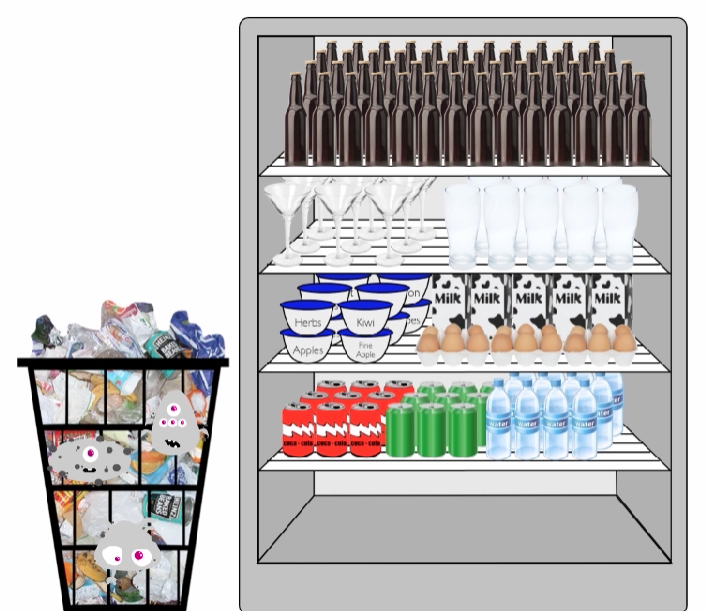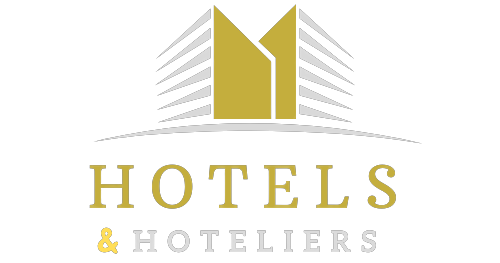Hygiene In A Restaurant
In this post, we will outline some of the unbreakable rules that must always be followed when it comes to maintaining hygiene in a restaurant. The reason why they are so important is because unhygienic practices can cause a Guest or colleague to get seriously ill, or even die, and so it is a very serious matter. Let’s go through this article as we will discuss:
- What Are Bacteria
- How Bacteria Are Spread
- Preventing Cross Contamination
What Are Bacteria?
When it comes to teaching and guiding on maintaining hygiene in a restaurant, first we need to understand what bacteria is. Bacteria are tiny organisms, invisible to the human eye, and are often called “germs”. We find bacteria everywhere, in the air, on the ground, and even in our buddies and most of these bacteria are not harmful. But some bacteria called Pathogens, are harmful. In the restaurant industry, this means that whatever comes into contact with pathogens gets contaminated and becomes dangerous to consume. This means that we should do everything we can to prevent the spread of pathogens through our food and drinks.
How Bacteria Are Spread?
When it comes to maintaining hygiene in a restaurant we need to learn and understand how to prevent bacteria from spreading. Something becomes contaminated through what is called cross-contamination. Cross-contamination is when bacteria or germs cross over from one object to another. One of the most common ways this happens is when a contaminated object comes into contact with something clean. Keep in mind that our hands and equipment should always be clean so that they don’t contaminate the food and drinks that we prepare with germs.
Preventing Cross Contamination
One of the most dangerous things about bacteria or germs is that they multiply under certain conditions. For this to happen, the spoilage bacteria need:
- Warmth – Bacteria multiply most between 5°C and 65°C (this is known as Danger Zone)
- Moisture – Germs do very well in moist conditions but they cannot survive in dry environments.
- Time- Germs multiply by splitting in half and they double their number every 20 minutes. This is why is very important to check that a product it’s not older than its expiry date.

In light of this, there are a few procedures to follow when it comes to hygiene that will prevent the spread and multiplication of germs. Keep your buddy clean and hygienic. Waste storage areas must be well away from food and drink preparation areas. Imagine if you have the bin next to the fridge as shown in the picture, is not very far for the bacteria to travel from the bin to the food and drinks you are preparing. Waste also often smells bad, and attracts pests such as rats and cockroaches. As you know, pests also carry and spread germs.
Keep your hands clean and hygienic. Wash your hands regularly in between tasks, after visiting the toilet, after sneezing or coughing, and after handling waste. If you don’t, your hands will become the perfect surface for the bacteria to travel from to the food your guests will be eating. Also waste containers should be emptied regularly to prevent too much waste, and therefore too many bacteria. The containers should be cleaned regularly as well. Certain food items will need to be cleaned before you use them to ensure that they are in a suitable state for your Guests. The most obvious examples are washing and cleaning products such as fruits & vegetables before preparing garnishes. Now that you know how to prevent cross-contamination you should be able to maintain the hygiene in a restaurant better than before.
Cleaning Tools For Maintaining Hygiene In A Restaurant
As earlier we went through bacteria, how bacteria spread, and how to prevent it, now we will go more into the cleaning tools we need to maintain hygiene in a restaurant. To know how to clean a bar or restaurant and keep it clean, it’s important to understand the different tools that you will be using to clean your place of work.
Steel Wool

Steel wool also known as wire sponge looks exactly as the name itself. It is silver in color and looks like a collection of wool that has been bunched together. It is used to scratch metal work surfaces or chopping boards and is especially good at removing dirt which is taught to get off. This is because its taught texture grips the dirt and removes it when using it to wipe. It is very important that steel wool is not used to clean surfaces like glass as it will scratch the glass.
Small Brush

These have bristles which are either made of wire or other filaments. They all have a form of handle, whether it be a block handle or a long thin handle. Brushes are used for cleaning those areas which are difficult to reach with a cloth. This is often in small spaces and tiny gaps. For example, the lining of a fridge or inside consumable holders.
Absorbent Cloth

It is almost impossible to know whether a cloth is absorbent or not without touching it. They are rubbery and soft in texture and rather thick. An absorbent cloth is always the first cloth that is being used when cleaning up a spilled liquid or wiping away the all-purpose cleaner from a surface. This is because it will absorb all the liquid and prepare the surface to be dried by the drying cloth.
Damp Dishcloth

Like the absorbent cloth, there is no universal type of damp dishcloth. This one is a standard cloth which has been damp with water. An important thing to realize is that your absorbent and dishcloth must look different from each other so that they are not confused. One way to differentiate from each other is to have them with different colors. The purpose of the damp dishcloth is to clear any dust or dry substances that are dirtying your restaurant. Unlike the absorbent cloth, the damp dishcloth should never be used on any liquid spills or to wipe away the all-purpose cleaner on a surface.
Dry Dishcloth

The main difference from the other cloth is because this one is dry and the other one is damp in water and this is because they have their purposes. The dry cloth is to dry surfaces which have just been wiped by either the absorbent cloth or the damp dishcloth. This leaves the surface dry, spotless, and looking perfect.

Polishing Cloth
The polishing cloth comes in many different forms. The best way to identify it is to understand that is soft and dry. The polishing cloth is used for polishing items such as glassware, silver, or mirrors. Not only does it give the surfaces a great shine, but it will also remove any fingerprints from them, leaving them perfect for service.
Broom and Mop

Everyone knows what is a broom and a mop and their importance in maintaining hygiene in a restaurant. A broom is used to sweep dust and dirt off from a dry floor. In a restaurant, a broom is widely used to clear broken glasses or dishes, dust, and other rubbish on the floor. A mop is used to remove dust dirt, dried-in liquids, or soil from the floor. This is done by dipping the mop into a bucket of water that has floor cleaning solution in it and then mopping the floor with it. The mop can then be wrung out to get rid of the dirty water and dirt.
Maintaining hygiene in a restaurant is important to prevent food contamination, which can lead to foodborne illnesses such as salmonella, E. coli, and norovirus. Contaminated food can cause serious health problems for guests or our colleagues and can also damage the reputation of your restaurant. Cleanliness and hygiene are also essential factors that influence guests’ perceptions of a restaurant. Guests are more likely to return to a restaurant that is clean and well-maintained, and they are more likely to recommend it to others. On the other hand, poor hygiene can lead to negative reviews and a decline in business. Keep in mind to follow and remember all the above important notes to have proper hygiene in a restaurant.
Frequently Asked Questions:
What Are Bacteria?
Bacteria are tiny organisms, invisible to the human eye, and are often called “germs”. We find bacteria everywhere, in the air, on the ground, and even in our buddies and most of these bacteria are not harmful.
How Bacteria Are Spread?
Something becomes contaminated through what is called cross-contamination. Cross-contamination is when bacteria or germs cross over from one object to another.
All the pictures above are not copyrighted and are shot by the owner of this site.



This gateway is incredible. The splendid substance displays the manager’s commitment. I’m overwhelmed and envision more such mind blowing substance.
This stage is incredible. The magnificent information uncovers the manager’s excitement. I’m shocked and anticipate additional such mind blowing material.